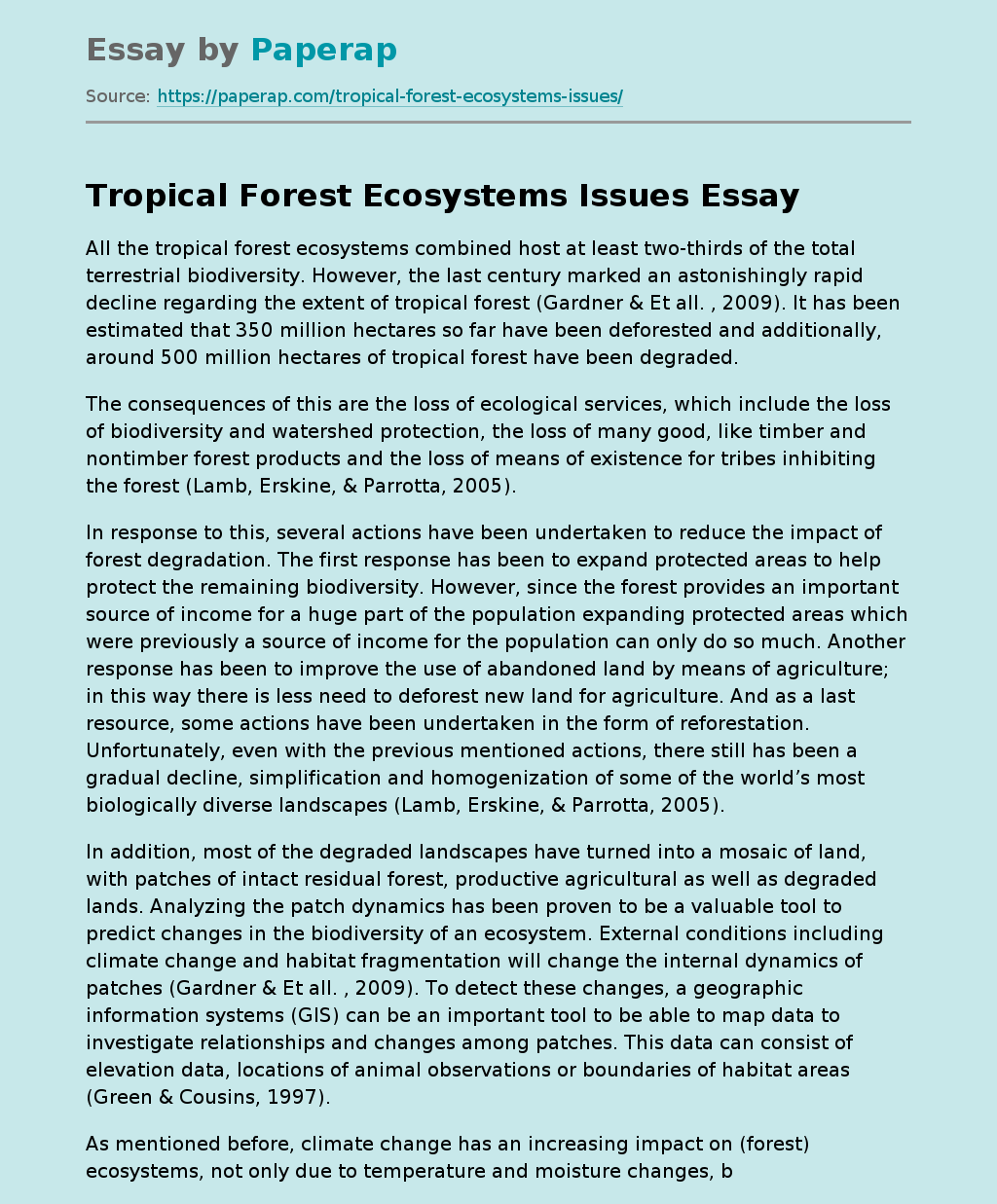Tropical Forest Ecosystems Issues
All the tropical forest ecosystems combined host at least two-thirds of the total terrestrial biodiversity. However, the last century marked an astonishingly rapid decline regarding the extent of tropical forest (Gardner & Et all. , 2009). It has been estimated that 350 million hectares so far have been deforested and additionally, around 500 million hectares of tropical forest have been degraded.
The consequences of this are the loss of ecological services, which include the loss of biodiversity and watershed protection, the loss of many good, like timber and nontimber forest products and the loss of means of existence for tribes inhibiting the forest (Lamb, Erskine, & Parrotta, 2005).
In response to this, several actions have been undertaken to reduce the impact of forest degradation. The first response has been to expand protected areas to help protect the remaining biodiversity. However, since the forest provides an important source of income for a huge part of the population expanding protected areas which were previously a source of income for the population can only do so much.
Another response has been to improve the use of abandoned land by means of agriculture; in this way there is less need to deforest new land for agriculture. And as a last resource, some actions have been undertaken in the form of reforestation. Unfortunately, even with the previous mentioned actions, there still has been a gradual decline, simplification and homogenization of some of the world’s most biologically diverse landscapes (Lamb, Erskine, & Parrotta, 2005).
In addition, most of the degraded landscapes have turned into a mosaic of land, with patches of intact residual forest, productive agricultural as well as degraded lands.
Analyzing the patch dynamics has been proven to be a valuable tool to predict changes in the biodiversity of an ecosystem. External conditions including climate change and habitat fragmentation will change the internal dynamics of patches (Gardner & Et all. , 2009). To detect these changes, a geographic information systems (GIS) can be an important tool to be able to map data to investigate relationships and changes among patches. This data can consist of elevation data, locations of animal observations or boundaries of habitat areas (Green & Cousins, 1997).
As mentioned before, climate change has an increasing impact on (forest) ecosystems, not only due to temperature and moisture changes, but also due to the alteration of disturbances. Climate change affects forest by altering the intensity, duration, frequency and timing of drought, fire, hurricanes, insect and pathogen outbreaks, landslides and windstorms. For a restoration effort to be as successful as possible the efforts should be designed in such a way to reduce vulnerability and/or to enhance the recovery after a disturbance (Dale & Et all., 2001).
Taking everything into account it is clear that the future of the tropical forest depends on human actors. Thereby, the only way to be able to do this is by moving away from restoring a single area towards a social-ecological approach in which the whole ecosystem and climate change is considered (Gardner & Et all. , 2009). This raises issues about which parts of the landscape should be reforested, what type of reforestation should be carried out and in what portion should the landscape be reforested to achieve particular objectives (Lamb, Erskine, & Parrotta, 2005). The use of GIS to deal with these issues could prove to be a valuable tool (Green & Cousins, 1997).
Tropical Forest Ecosystems Issues. (2021, Nov 15). Retrieved from https://paperap.com/tropical-forest-ecosystems-issues/

